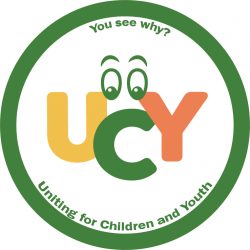Question 5 – Zone 4 Response
Contents
The Question in brief
Response from:
– Wendy Hough
The Question in Brief
What do you believe an OCDSB trustee’s role is re: promoting well-being in Ottawa public schools? (See full text of Question 5.)
Wendy Hough
This final question put forth by the UYC, I must admit, was outside of my knowledge base – I had not yet done any research into the question of what mental health initiatives have been adopted by the OCDSB. So, in hopes of adequately answering your question, I did what you do in 2018; I started digging through the OCDSB website on the issue. I was quite impressed by the structural framework that they have delineated which involves a tiered approach to mental health which has at its foundation promoting mental health in the classroom where the development of social and emotional skills are fostered including problem-solving, decision making, and coping with stress. The next tier relates to early identification which then allows for accommodation and modification as required. For those student requiring mental health or crisis intervention beyond services or supports that are available in the school, the Board has established connections to various community resources and will act as a bridge to those external services. This all seemed very promising.
When I started digging further, what was missing was detail with regard to the specific programs that are being used especially at the critical early stages of building that foundation of wellness. There were a handful of initiatives targeted primarily at bullying prevention including the Roots of Empathy (which my son absolutely loved), WITS, and the 4th R. These programs are all intended to both reduce bullying and increase empathy. There was reference to some character building programs that the board engages in as well such as Me to We (which my daughter loved) and DILA. However, there was no information available on the OCDSB website as to how broadly these programs are being used across the board or how this is integrated with curriculum to ensure that the wellness foundation is established. With regard to identification and intervention they listed both school based resources from the classroom teacher to EAs to LSTs, to guidance counselors through to the principal and vice principals. There was also a listing of central supports including specialized teams, social workers and psychologists. There was also mention of crisis intervention training particularly as relates to suicide prevention using ASIST and SafeTALK. However, all of my looking left me with few answers to your questions. I have no sense of whether the OCDSB response is commensurate with the magnitude of the issue of the psychological distress being experienced by youth. What you have done by asking this question is that you have given me the kick in the pants to look into this matter further. My personal sphere, unfortunately, involves more than one child who is or did experience significant mental health issues. My interest in ensuring that we are doing enough is strong and close to heart. I will be exploring this matter more fully and I thank you for flagging this as a priority for me.
As the clock ticks on your deadline, I will add that in addition to my academic credentials in the field of child psychology, speech-pathology and communication sciences, I am also a personal trainer, fitness instructor, and life coach. I am an avid runner and cyclist. I spend as much time as possible in the forest as I can possibly fit into my life. I am well-versed in the benefits of fitness and the out-of-doors. Ensuring that we are doing enough to keep children active is a prime directive of mine. Further, I believe that means more than spending 20 minutes a day playing with things from the classroom bag. Children need to be outside. They need to learn that fitness does not mean that you have to play a team sport. The goal of our schools with regard to wellness must include fostering a sense of love for activity – whatever form it takes – and to encourage that for life.

